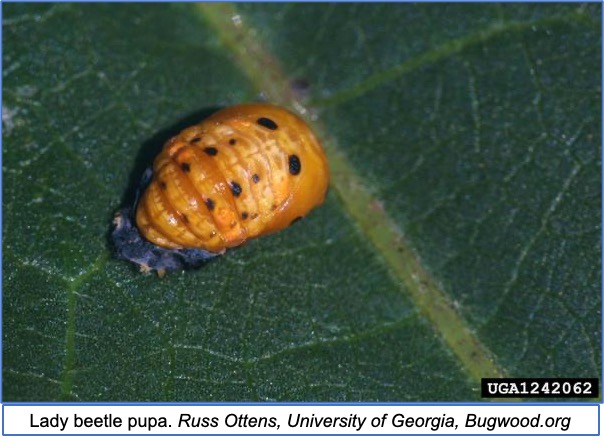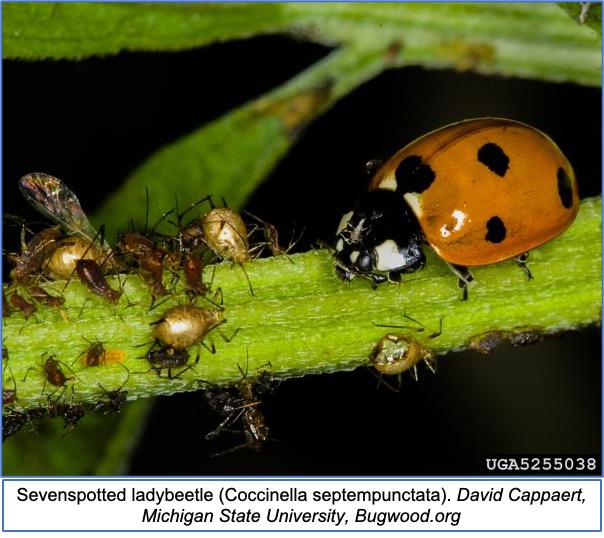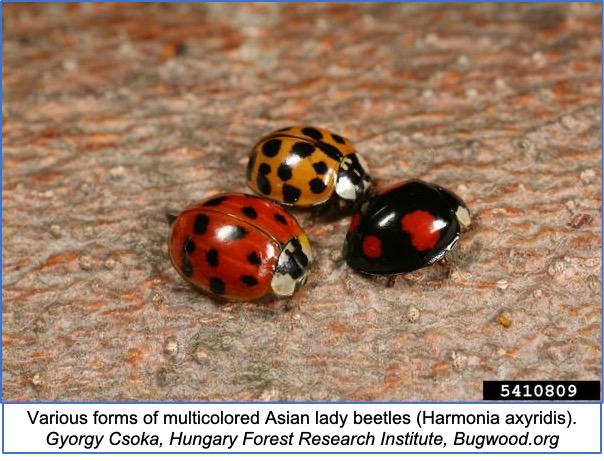Lady Beetles in the Landscape
go.ncsu.edu/readext?867520
en Español / em Português
El inglés es el idioma de control de esta página. En la medida en que haya algún conflicto entre la traducción al inglés y la traducción, el inglés prevalece.
Al hacer clic en el enlace de traducción se activa un servicio de traducción gratuito para convertir la página al español. Al igual que con cualquier traducción por Internet, la conversión no es sensible al contexto y puede que no traduzca el texto en su significado original. NC State Extension no garantiza la exactitud del texto traducido. Por favor, tenga en cuenta que algunas aplicaciones y/o servicios pueden no funcionar como se espera cuando se traducen.
Português
Inglês é o idioma de controle desta página. Na medida que haja algum conflito entre o texto original em Inglês e a tradução, o Inglês prevalece.
Ao clicar no link de tradução, um serviço gratuito de tradução será ativado para converter a página para o Português. Como em qualquer tradução pela internet, a conversão não é sensivel ao contexto e pode não ocorrer a tradução para o significado orginal. O serviço de Extensão da Carolina do Norte (NC State Extension) não garante a exatidão do texto traduzido. Por favor, observe que algumas funções ou serviços podem não funcionar como esperado após a tradução.
English
English is the controlling language of this page. To the extent there is any conflict between the English text and the translation, English controls.
Clicking on the translation link activates a free translation service to convert the page to Spanish. As with any Internet translation, the conversion is not context-sensitive and may not translate the text to its original meaning. NC State Extension does not guarantee the accuracy of the translated text. Please note that some applications and/or services may not function as expected when translated.
Collapse ▲As temperatures begin to climb, so do the number of insects in our home landscapes. One of the most common and recognizable of these insects is the lady beetle. With over 400 different species of lady beetles varying in both color and spot count, it’s not surprising these insects hold a fascination for many home gardeners.
Lady beetles are often recognized as beneficial insects that feed on other insect pests like aphids and mites. However, the cute little adult insects that we see flying around are not particularly heavy feeders, but the immature larval stages can be quite voracious. Since immature lady beetle larvae do not resemble adult beetles, they are often mistakenly identified as plant pests. Lady beetle larvae are brightly colored with a tail like appendage resembling an alligator. These tiny larvae are constantly searching for a meal, feeding on aphids, mites, and other soft bodied insects, including the eggs of moths or butterflies.
 When lady beetle larvae eventually pupate, they become stationary and attach themselves to various plants surfaces. Pupae do not resemble adult insects either, which can lead to home gardeners confusing theme for sucking insects, who may then try to remove them. Adult beetles will eventually emerge from these pupae casings, leaving these old structures behind.
When lady beetle larvae eventually pupate, they become stationary and attach themselves to various plants surfaces. Pupae do not resemble adult insects either, which can lead to home gardeners confusing theme for sucking insects, who may then try to remove them. Adult beetles will eventually emerge from these pupae casings, leaving these old structures behind.
Lady beetles vary in color, with some insects almost completely black, while others can be reddish to orange. The multicolored Asian lady beetle can also vary in the number of spots present on their wing coverings. The multicolored Asian lady beetle, the seven spotted lady beetle, and the convergent lady beetle are some of the most common species you will find in our local landscapes.
Some homeowners may try to purchase these insects to use as biological control options in their gardens. However, purchasing lady beetles for release does not always go the way you plan, since these insects can easily fly away. One of the best ways to encourage lady beetle activity in your landscape is to recognize their presence, and practice patience by allowing them time to provide natural predation instead of applying insecticide.
Occasionally, lady beetles can be a problem for some homeowners, as various species prefer to overwinter in large numbers in cracks and crevices. Multicolored lady beetles have been known to be a nuisance for some homeowners in North Carolina who sometimes find large congregations in eaves and other locations in homes. While this is rarely a problem in Pamlico County, the simple solution is to use a vacuum to collect these insects, then relocate them to a protected area outside so they can continue to benefit your landscape next spring.
If you would like to learn more about lady beetles and the various species, consider reviewing our Extension note titled “Lady Beetles in the Landscape”
For additional questions or information, please contact Daniel Simpson at 252-745-4121 or daniel_simspon@ncsu.edu.





